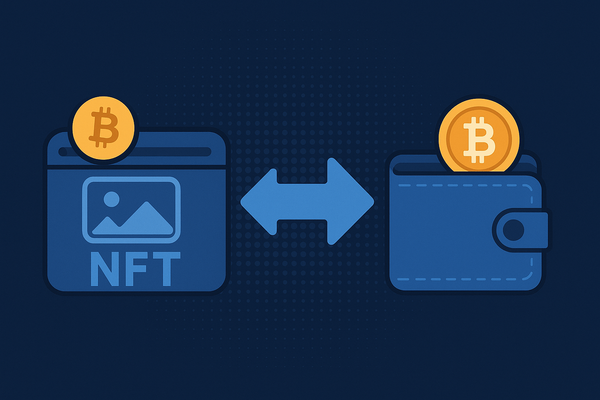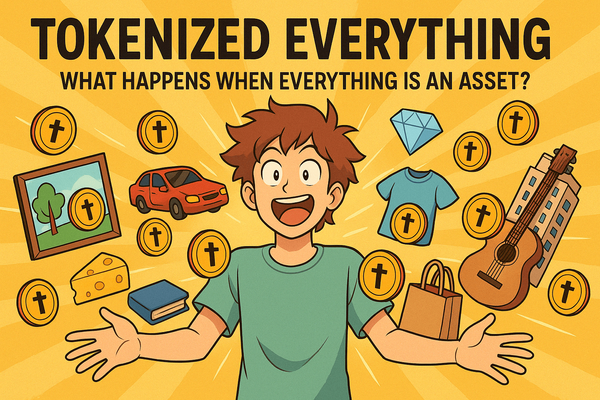Crypto Staking in Australia: How It Works & What to Know (2025 Guide)

⚖️ Disclaimer: This article is based on my personal experience and research. It’s not financial or legal advice. Please speak with a registered tax agent or financial advisor before making crypto-related decisions.
Over the past few years, I’ve been exploring different ways to make my crypto work for me — and staking has definitely become one of the more reliable passive income options. If you're curious about how staking works, what platforms are best, and how the ATO treats it in Australia, I’ll break down everything I’ve learned through trial, error, and a bit of tax panic.
🔍 What Even Is Crypto Staking?
When I first got into staking, the idea sounded strange: lock up your crypto, and it earns you more crypto? But once I understood it, it clicked.
Crypto staking is when you “lock” a certain amount of cryptocurrency to help secure a Proof-of-Stake (PoS) blockchain network (like Ethereum). In return, the network rewards you — often daily or weekly — with extra tokens. It’s kind of like earning interest from a bank… but decentralised.
🇦🇺 Is Crypto Staking Legal in Australia?
Yes — I checked this myself. Staking is totally legal in Australia. The Australian Taxation Office (ATO) is well aware of it and even provides guidance on how it should be taxed. Just know that if you’re staking through a centralised platform like Swyftx, CoinSpot, or Binance Australia, they may report your activity (so keep records!).
As always, I keep an eye on regulations.
💰 How the ATO Taxes Staking (Yes, There Are Two Parts)
This was confusing at first, but here’s how I break it down:
| Event | ATO Tax Treatment |
|---|---|
| Earning staking rewards | Counted as ordinary income |
| Selling or swapping those rewards | Triggers Capital Gains Tax (CGT) |
So if I earn 0.2 ETH from staking, I need to declare that ETH’s AUD value the day I received it as income. If I later sell it and it has gained value, the gain is taxed again under CGT.
Its best to keep records, either in a spreadsheet or via some software like Koinly — date, coin, value in AUD at the time. Makes tax season a bit less painful.
🏦 My Favourite Crypto Staking Platforms in Australia (2025)
Here are the platforms you can use and compare:
| Platform | Assets I Staked | Est. APY | Why I Like It |
|---|---|---|---|
| Swyftx | ETH, ADA, SOL | Up to 10% | Super easy UI, works with AUD directly |
| Binance AU | ETH, BNB, DOT | Varies | Huge range, best if you’re more advanced |
| Kraken | ADA, ETH, DOT | Up to 12% | Solid reputation, great dashboard |
| CoinSpot | ETH, ADA | Up to 5% | Aussie-based, very beginner friendly |
Note: These APYs can change. I always check what’s currently on offer before staking.
⚠️ Risks I Consider Before Staking
Staking isn't just “free money.” I’ve learned the hard way that there are a few real risks:
- Price volatility: Rewards are in tokens. If the price drops, your rewards might be worth less than expected.
- Lock-up periods: Some staking options don’t let you withdraw instantly. I’ve had assets locked for 7–30 days before.
- Slashing: This is rare on centralised platforms, but if you solo-stake and your validator misbehaves, you could lose a portion of your staked funds.
- Custodial risk: When staking through an exchange, you’re trusting them to hold your crypto securely.
🧠 My Staking Tips (From Experience)
- Start small: I never throw in all my ETH or ADA at once. I test platforms with small amounts first.
- Use local platforms: CoinSpot and Swyftx are AUSTRAC-registered, which gives me peace of mind.
- Stay diversified: I stake across multiple coins and platforms to avoid putting all my eggs in one basket.
- Record everything: Seriously, for tax season, a simple Google Sheet can save hours.
📚 Related Articles I Recommend
- How to Buy Cryptocurrency in Australia: Step-by-Step Guide (2025)
- Best Crypto Exchanges in Australia for Trading & Investing
- Crypto and NFT Scams in Australia: What to Watch For
📌 Final Thoughts
Staking has become a core part of how I manage my crypto in 2025. It’s not a get-rich-quick scheme, but for someone like me who holds long term, it’s a great way to grow assets passively. As long as you understand the risks, follow ATO rules, and use trusted platforms, staking can work in your favour too.
If you’re just starting, take it slow — and never stake more than you’re comfortable losing.




